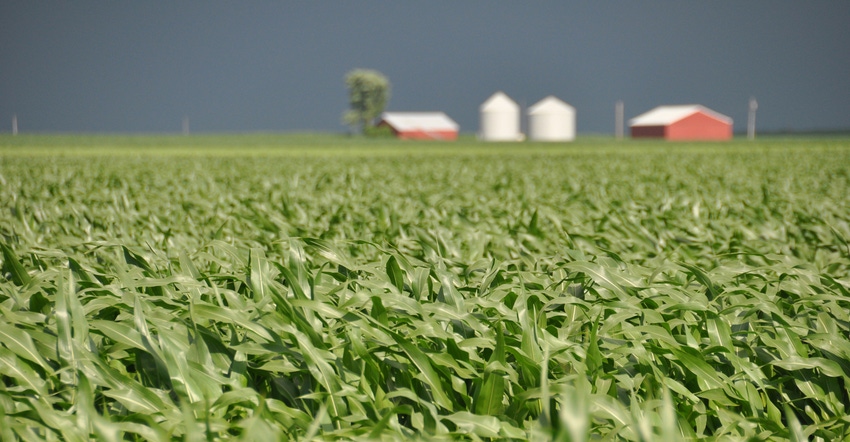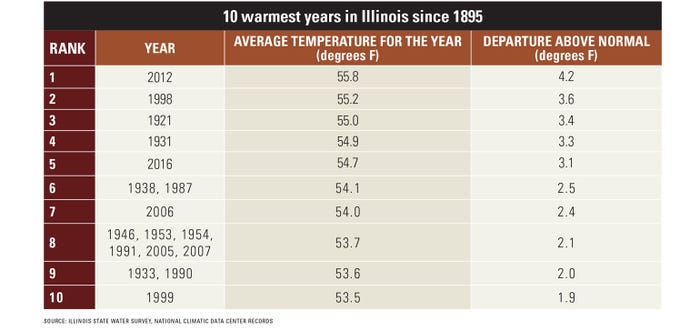
When the mercury drops below zero and wind chills dance around minus 20 degrees F, global warming and climate change may seem like a ridiculous concept. Although it may not feel like it right now, Jim Angel, state climatologist with the Illinois State Water Survey, says Illinois temperatures have been steadily rising since the 1890s. The average observed temperature is 1 to 1.5 degrees warmer, he notes.
That’s not too bad, right?
“A degree or so doesn’t sound like a big deal, but these trends translate into fewer cold winters and more mild winters,” Angel says.
The frigid temperatures during winter 2014 may stand out in recent memory, but Angel notes those conditions were mild compared to winters of the 1800s and average compared to winters in the 1970s.
Summer weather is also changing. Summer daytime temps may not be on the rise, but Angel points out a trend toward warmer summer nights.
“We didn’t have too many hot days this last summer, but the nighttime temperatures didn’t fall off,” he explains. Instead, nighttime temperatures were in the 60s and low 70s.
“That’s hard on crops, livestock and us,” Angel notes. Hot nights during pollination are particularly detrimental to corn crops.
Precipitation pattern changes present a totally different set of challenges. Angel says farmers are dealing with 10% to 15% more precipitation that falls during intense rain events, not gradually over a few days. “That’s an extra month’s worth of rain,” he explains.
The strong rain events could be easily followed by flash droughts, Angel says. “This back and forth may be harder to manage than rainfall that is uniformly wetter or drier,” he notes. “It really does a number on crop yields.”
You can’t change the weather, so what can farmers do? Angels says some farmers are adding drainage tile to deal with excess water and irrigation to handle dry periods.
2017 outlook
Angel says soil conditions are currently warmer and wetter than average. “Central Illinois is still muddy,” he notes. Temperatures haven’t stayed low enough for long enough for soils to freeze. Angel says pests, weeds and soil pathogens may have a chance to overwinter, and compaction could be a challenge without a freeze and thaw to break up soils.
Looking ahead toward spring planting season, Angel says the National Weather Service predicts a continued trend toward warmer and wetter conditions based on a weak La Niña system in the Pacific Ocean. A La Niña weather pattern produces an active jet stream and wet conditions, he explains. An early spring followed by a frost is highly probable.
Finally, Angel expects the warmer temperature trend to continue into the summer, especially at night.
Record-setting precipitation over the last 18 months in Illinois
2015: wettest June with 9.44 inches
2015: second-wettest December with 6.68 inches
2016: third-wettest July with 6.85 inches
2016: second-wettest August with 6.65 inches
Source: Illinois State Water Survey

About the Author(s)
You May Also Like




